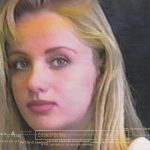Cornford & Cross
ISEA Bio(s) Available:
ISEA1998
We have been working jointly since 1987 when we met as students at St Martins School of Art in London. Our subject matter and our way of dealing with it has often emerged from living and working in cities. More recently, our interest in urban patterns of social, political and economic organisation has broadened to include engagement with power structures further afield.
We maintain that as well as producing aesthetic experiences, a key function of contemporary art in an open society is to test concepts, assumptions and boundaries. Yet rather than making observations from an oppositional stance, we aim to encourage a ‘reflective scepticism’ towards individual actions and their collective results. Our own practice is not separate from the economic and political spheres: these are connections which interest us.
The form of a project may develop, but we keep intact its core proposition, which exists most clearly in language. For each project, we write and often re-write a text. If a proposal is approved, then the text serves as the basis of an agreement or contract of sorts. If a project remains unrealized, then the proposal stands. Throughout, the texts ‘anchor’ some of the possible meanings contained within a work, as well as ‘relay’ meanings from the surrounding context. This method of counterpointing different aspects of a situation partly reflects our own differences in opinion.
We don’t work in a studio and this has had an important influence on our practice. To begin with, we took it upon ourselves to find opportunities to make and show work and became interested in going out and looking more closely at particular environments. At first, because our early installations were grounded in one place, we thought they were ‘site specific’. But as each project developed through a series of encounters, actions and debates, we found ourselves responding not just to physical sites, but also to social situations and historical moments.
Because most of our works have been temporary, and made in specific locations, more people encounter them through reproduction than through first-hand experience. So photography is central to our practice – we plan our projects in terms of their photographic possibilities, document the work in progress, and stage summarising shots of each completed work. Although we wouldn’t describe our photographs simply as ‘documents’, we do trade with the notion of an indexical relationship between the image and lived experience.
Our interventions are often disruptive to everyday life, so realising them calls for close interaction with the organisations and people who occupy places and influence events. We are often in need of expert help and advice, and have worked with many highly skilled people from disciplines including architecture, aviation, film-making, software engineering and town planning. Every art project we have carried out has encountered obstacles, which were only overcome with the flexibility shown by people prepared to take risks, go beyond conventional interpretations of their roles and become active participants.
Website:
Last Known Location:
- England, GB





